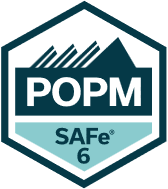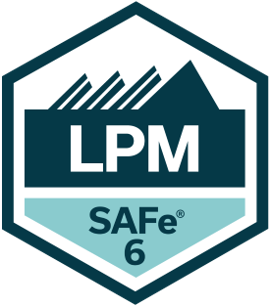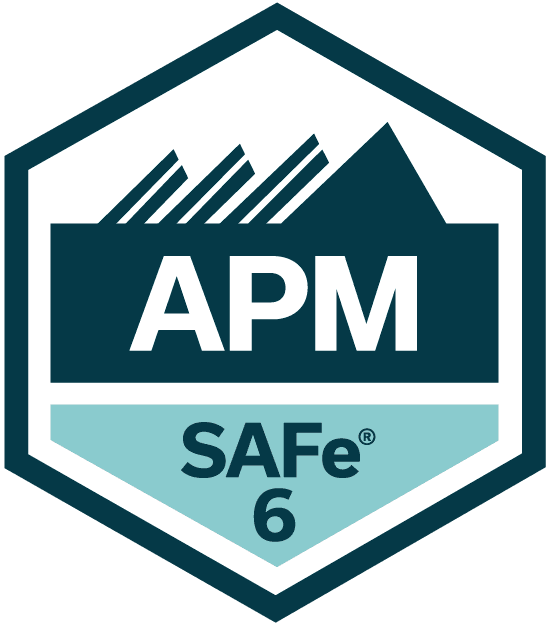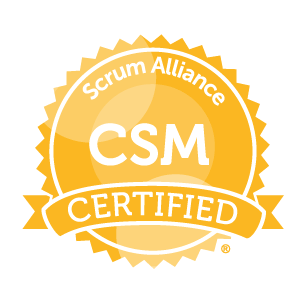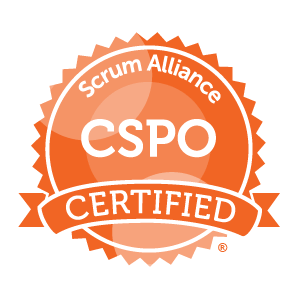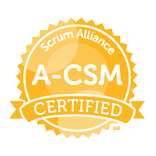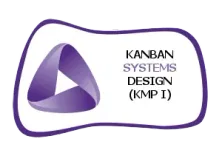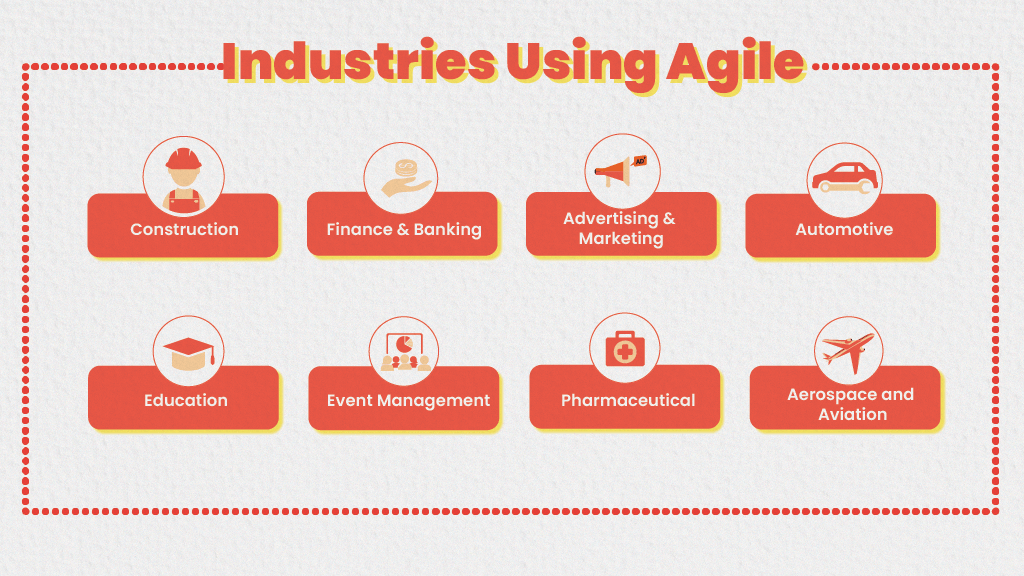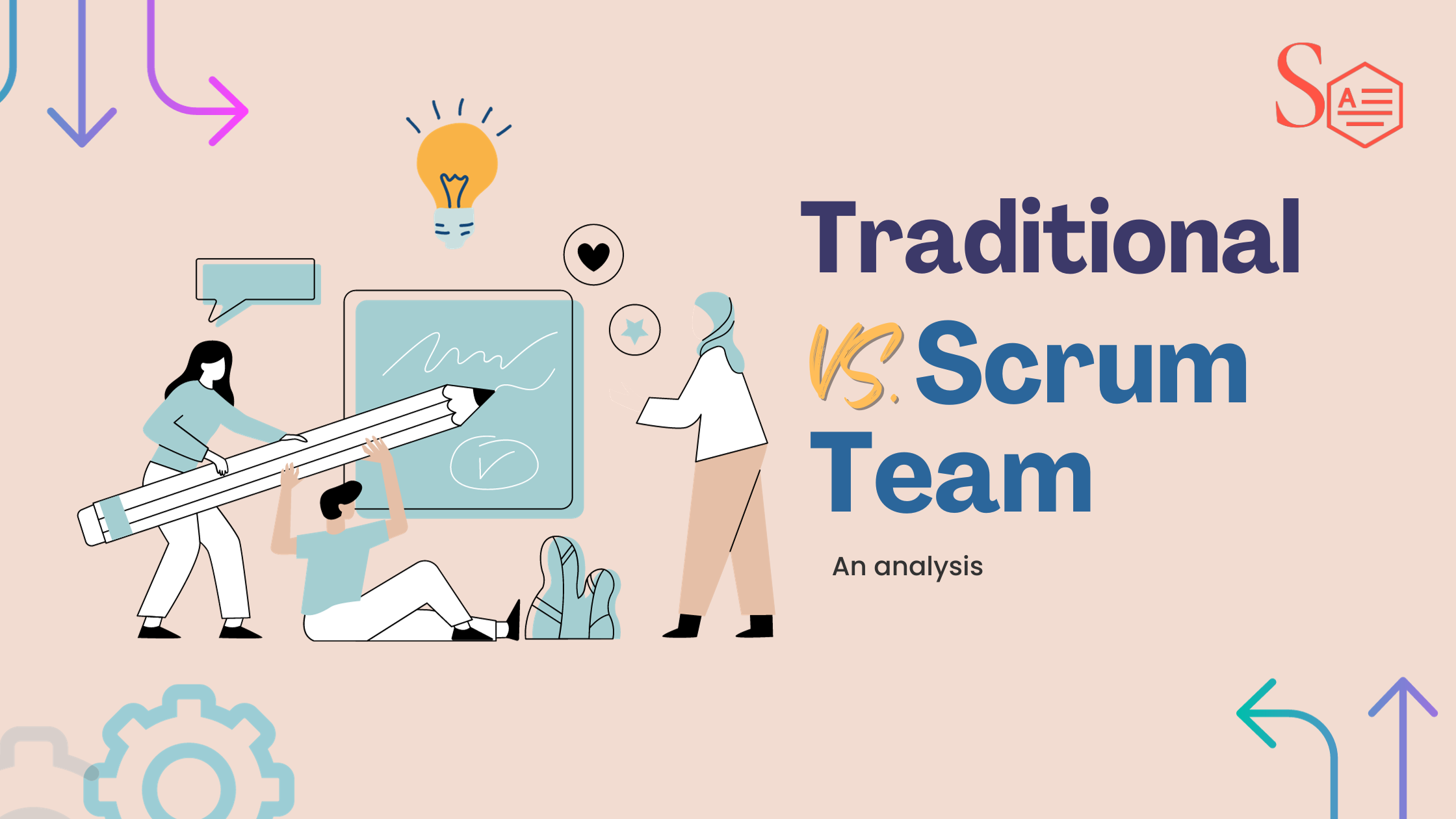Agile has proven its mettle in the software development process over the years, but does it stand a chance in the non-IT industries? Have you ever wondered what the scope of Agile is? Is there any potential to scale Agile beyond IT? This article will provide you with the right insights about how Agile is being incorporated in industries other than software.
Benefits of Agile in non-IT industries
Agile is more than just a methodology or technique – it is a set of principles that unite the development team in their goal of achieving customer satisfaction. While the Agile Manifesto provides guidance, it does not restrain you with too many instructions. It establishes a foundation for a customer-centric approach while boosting employee morale.
The product development teams collaborate iteratively to produce potentially shippable products. These iterations lead to a pathway of future improvements and upgrades. The aim is to keep the process workflow agile and adaptable, thus enabling continuous improvements. This process of setting time-boxed goals facilitates more frequent customer interactions and collaborations.
Agile principles not only ensure customer-centric results but also provide the stakeholders with more frequent releases, rather than waiting for one big launch. The primary intent is to empower the teams to adapt on the go and be flexible to changing demands.
The aforementioned potential of Agile methodology is broad enough to be applied to not just software, but endless other industries. From manufacturing industries that deliver physical products to service industries that require workflow management, the Agile Manifesto acts as a guide to every organization that is open to change and thriving for success.
Which industries have tried Agile so far?
The processes and workflow in an organization can become quite complex and unorganized as the scale or the number of people involved increases. Although there are other techniques available to reduce complexities, Agile has proven to be a reliable method for promoting cross-functionality and boosting team collaboration. By breaking tasks down into iterations, workflow management becomes more efficient.
Agile methodologies, originally popularized in the software development realm, have transcended their initial boundaries. Today, industries across the spectrum recognize the value of Agile practices in enhancing collaboration, efficiency, and overall project success. Let’s explore some of these industries and how they’ve leveraged Agile principles:
Construction Industry
Major construction projects involve high capital investments, strict regulations, and tight schedules. Traditional project management approaches often struggle to keep up with real-time decision-making and effective communication.
Agile methodologies empower construction companies to plan, design, and execute projects seamlessly. By aligning milestones and fostering collaboration, they navigate complexities more effectively.
The construction industry, often associated with rigid schedules and complex projects, is undergoing a transformation. Agile methodologies, borrowed from software development, are reshaping how construction projects are planned, executed, and delivered. According to the 2024 SAFe Careers Snapshot, about 7% of the SAFe Product Owners are employed in the construction industry.
How can Agile transform the construction industry?
Flexibility and adaptability: Traditional construction projects follow linear paths, leaving little room for adjustments. Agile emphasizes adaptability, allowing teams to respond to changes swiftly. Whether it is the unexpected weather conditions or design modifications, Agile keeps projects on track.
Collaboration and communication: Agile promotes collaboration among stakeholders such as architects, contractors, engineers, and clients. Regular communication ensures everyone is aligned, reducing misunderstandings and delays.
Incremental progress: Instead of waiting for the entire project to be complete, Agile breaks it down into smaller, manageable pieces. Each iteration delivers value, allowing for continuous improvement.
Finance and Banking industry
Financial institutions deal with regulatory changes, customer demands, and technology advancements. Agility is crucial to stay competitive. Agile methods enhance project delivery, risk management, and customer satisfaction. Scrum practices help financial teams collaborate effectively and deliver value-driven solutions.
How can Agile transform the Finance and Banking sector?
Accelerated change: The financial landscape is shifting faster than ever. Banks must swiftly adjust priorities and processes to stay competitive. Agile simplifies complexity and fosters accountability at the front-line level.
Low-risk digital strategies: Historically, banks grappled with large IT program failures. Agile shifts the paradigm. Instead of planning every detail upfront, it allows banks to address pain points incrementally. Solving client journey challenges at a micro level reduces risk and ensures adaptability.
Customer-centric: Senior executives are re-evaluating their approach to how banks can serve customers differently. Agile provides the flexibility needed to pursue bold ideas and drive change.
Which organizations have implemented Agile methods in the finance and banking industry?
According to Scaled Agile, Inc., Handelsbanken, a Swedish Bank has implemented SAFe as they began to scale and thus overcame delayed processes. With Agile methodologies in place, Handelsbanken has been able to manage workflows efficiently and collaborate effectively across various functions.
Another example of successful Scaled Agile implementation is Nordea Bank. When Nordea launched its digital banking organization in 2014, it began its implementation journey with Agile. Since then, more than 5500 employees of Nordea have been trained in Agile.
Advertising and Marketing Industry
Marketing and advertising companies operate in dynamic environments, juggling multiple campaigns, client needs, and deadlines. Efficient decision-making is essential. Agile methods help marketing teams make informed choices, enhance productivity, and adapt to changing market trends. Daily stand-ups foster collaboration and keep everyone aligned.
In today’s fast-paced digital landscape, marketing teams face the challenge of staying relevant, adaptive, and customer-centric. Agile Marketing is a methodology borrowed from software development and has revolutionized the way marketing campaigns are executed.
Agile Marketing is a marketing approach that uses Agile methodologies and emphasizes collaboration, flexibility, and iterative progress. It is similar to Agile software development in its approach.
How can Agile transform the advertising and marketing industry?
Cross-functional teams: Agile marketing teams consist of individuals from various disciplines, such as designers, content creators, data analysts, and strategists. These teams work together and foster creativity.
Frequent iterations: Instead of lengthy planning cycles, Agile Marketing focuses on short iterations. Teams release smaller chunks of work, gather feedback, and adjust their strategies accordingly.
Continuous feedback: Agile Marketing thrives on feedback loops. Regular check-ins, retrospectives, and data-driven insights help teams adapt swiftly.
Customer-centric approach: The ultimate goal is to deliver value to the customer. Agile Marketing prioritizes audience satisfaction over rigid plans.
Which organizations have implemented Agile methods in marketing and advertising?
McKinsey acknowledges the significance of agility in marketing. They use data and analytics to consistently identify promising opportunities or solutions, quickly implement tests, evaluate the outcomes, and iterate accordingly. By adopting Agile Marketing, they are capable of running multiple campaigns at the same time and promptly adapting to the ever-changing market dynamics.
MarTech emphasizes the significance of Agile marketing. Their approach involves flexibility, collaboration, and data-driven decision-making. By harnessing the power of Agile methodologies, marketers can achieve unprecedented levels of efficiency and effectiveness.
Automotive Sector
The automotive industry faces slow development due to rigorous testing and safety requirements. Yet, innovation remains critical to stay competitive. Some vehicle manufacturers have embraced Agile project management. By adopting Scrum practices, they accelerate innovation, streamline processes, and respond more swiftly to market demands.
The automotive industry, with its intricate supply chains, complex engineering, and rapid technological advancements, is increasingly turning to Agile methodologies to navigate the road ahead.
How can Agile transform the automotive sector?
Faster delivery: Traditional automotive projects follow a linear path, but Agile allows for faster adaptation. In an industry where time-to-market matters, Agile ensures that vehicles keep pace with evolving consumer demands.
Cross-functional collaboration: Agile simplifies the workflows. Engineers, designers, suppliers, and business teams collaborate seamlessly, fostering innovation.
Quality and customer satisfaction: Agile emphasizes continuous improvement. By delivering smaller increments of functionality, manufacturers can address quality issues promptly and meet customer expectations.
Which organizations have implemented Agile methods in the automotive sector?
Porsche is a well-known manufacturer of sports cars, and they understand the significance of being agile and innovative. To improve their ability to adapt, pioneer, and drive growth, they have adopted the Scaled Agile Framework (SAFe). As cited by Porsche, by utilizing SAFe, Porsche aims to remain at the forefront of automotive excellence.
Mercedes-Benz Mobility AG began its Lean Agile transformation with SAFe in 2017. They implemented SAFe in customer-facing domains before scaling up to the portfolio level. As per the reports, by 2022, they introduced around 40 products across 34 markets, worth €130 billion. SAFe enabled the company to reduce application-to-payout times for financing, increase digitization and automation, and adapt to changes in environmental and consumer demands.
Education sector
Universities and educational institutions often grapple with complex structures, diverse departments, and varied goals. Effective collaboration is crucial for achieving educational excellence. By adopting Scrum techniques, universities streamline processes, improve organization, and enhance cross-functional collaboration. Daily scrums keep teams focused on priorities, leading to better outcomes.
The traditional education system faces increasing challenges in a rapidly changing world. Agile methodologies offer a fresh approach to teaching and learning.
How can Agile transform the Education sector?
Continuous learning: Semester-based learning has been the norm, but Agile encourages shorter, incremental learning cycles. Students benefit from more frequent feedback and adaptability.
Collaboration and interaction: Agile shifts the focus from individualized learning to collaborative efforts. Students learn together, share ideas, and engage in meaningful discussions.
Better learning experiences: Prioritizing student experiences over rigid plans allows educators to tailor content and activities to meet diverse needs.
Constant reflection: Agile promotes reflection at all levels between students, teachers, and administrators. Reflection and retrospectives allow the teams to determine the gap between the plan and the execution.
Which organizations have implemented Agile methods in the education industry?
RMIT University in Melbourne, Australia, has adopted Agile methodologies for business agility transformation. They collaborated with Pretty Agile to implement SAFe in 2014. Their Student Administration Agile Release Train comprises feature teams, which tailor solutions to meet student administrative requirements. Early results include improved employee performance, increased business engagement, reduced cycle time, and higher release frequency.
For more details, you can refer to the original case study.
Event Management Industry
Event planning involves intricate coordination, tight schedules, and diverse stakeholders. Traditional project management approaches may fall short. Event planners benefit from Agile practices by breaking down tasks, maintaining transparency, and adapting to evolving requirements.
To keep up with the changing industry and customer demands, research and agility are the key, and Agile project management enables the teams to stay agile and keep upgrading. Agile project management is gaining traction in various industries, including events.
Agile project management is an innovative and collaborative approach that emphasizes delivering top-notch outcomes in a flexible environment. It differs from traditional project management methods that rely on set plans and strict adherence to predefined requirements. Agile methodologies, on the other hand, embrace change and prioritize customer satisfaction.
Agile project management brings a lot of benefits to the events industry. One of them is the ability to adapt to the constantly changing demands and expectations of clients and attendees. By breaking down the development process into short sprints, event organizers can continuously improve their projects based on real-time feedback. This iterative approach helps them to deliver better results and satisfy their customers.
How can Agile transform the event management industry?
Task breakdown: The iterative nature of Agile allows event organizers to break down complex projects into manageable tasks. Smaller increments of work reduce the risk of delays and bottlenecks.
Transparency and communication: Daily standup meetings and regular progress updates promote transparency. Team members stay informed about the project’s status, identify potential obstacles, and collaborate on solutions.
Which organizations have implemented Agile methods in the event management industry?
Propared Events, a company specializing in event production, has embraced Agile methodology. Their journey began when they ventured into software development, expanding their worldview beyond traditional event planning. Agile, with its iterative and responsive approach, resonated with their event management work. It allowed them to adapt to changing requirements and design elements during projects. By applying Agile principles, Propared Events have reported having improved collaboration, efficiency, and cost-effectiveness in their event production processes.
Similarly, Zoho Backstage, a platform for event organizers, advocates for Agile planning. They break down the Agile approach into six steps that event planners can easily implement. This methodology ensures events thrive, even in times of uncertainty.
Pharmaceutical sector
Drug development requires rigorous testing, regulatory compliance, and efficient collaboration among research, development, and production teams. Agile methodologies enable pharmaceutical companies to manage complex projects more effectively. Cross-functional teams collaborate seamlessly, leading to faster drug development cycles.
The pharmaceutical sector, renowned for its rigorous regulations, lengthy drug development timelines, and complex processes, is embracing Agile methodologies to revolutionize the way it operates. Agile principles are reshaping pharmaceutical research, development, and commercialization.
How can Agile transform the pharmaceutical sector?
Market demands: Agile’s iterative approach allows pharmaceutical companies to respond swiftly to market demands. In an industry where time is critical, Agile ensures that life-saving drugs reach patients faster.
Collaboration and cross-functional teams: Scientists, clinicians, regulatory experts, and marketers collaborate seamlessly. Cross-functional teams accelerate decision-making and innovation.
Adaptability: Pharma faces evolving clinical data, changing regulations, and patient needs. Agile enables flexibility, reduced risks, and enhanced outcomes.
Which organizations have implemented Agile methods in the pharmaceutical sector?
Known for products like Botox, Allergan used Agile methodologies in its digital transformation efforts. Allergan Data Labs was built around Agile practices, resulting in faster development cycles and improved customer engagement.
A global biopharmaceutical business, AstraZeneca employs Agile methods to develop innovative medicines. According to a case study, their Agile adoption has helped them stay competitive and deliver value to patients worldwide.
Aerospace and Aviation Industry
Aerospace projects involve intricate engineering, safety protocols, and global supply chains. Traditional waterfall approaches can hinder progress. Agile practices allow aerospace companies to iterate, adapt, and respond to changing requirements. Frequent feedback loops ensure alignment and reduce risks.
The aerospace industry, known for its complex and lengthy development cycles, is now embracing Agile methodologies to transform the way it designs and builds aircraft.
How can Agile transform the aerospace and aviation industry?
Speed and adaptability: Traditional aerospace projects often span several years, hindering responsiveness to market demands. Agile allows teams to pivot swiftly based on real-time data, reducing time-to-market.
Reduced waste: Agile principles discourage unnecessary work. Aerospace manufacturers can focus on what truly matters to customers, streamlining processes.
Improved collaboration: Cross-functional teams foster creativity and break down communication barriers. Engineers, designers, and analysts collaborate seamlessly.
Which organizations have implemented Agile methods in the aviation and aerospace sector?
In the aviation industry, Flydocs transformed its engineering team using Agile methodologies. According to a case study by Leadership Tribe, by improving development methods, they achieved better, faster product delivery while maintaining quality.
A French aircraft company, Latécoère significantly reduced the time it took to design and build a new aircraft door by applying Agile principles. Their goal was to cut development time from four years to two years, but they achieved even better results. They ended up designing and building the door in just 18 months, as stated by the Senior Vice President of innovation and R&D in an interview with BCG.
Summary
In conclusion, Agile methodologies extend far beyond the IT domain. As industries recognize the benefits of collaboration, adaptability, and iterative progress, Agile practices continue to transform project management across diverse sectors. Whether you’re constructing a skyscraper, launching a marketing campaign, or developing life-saving drugs, Agile can be your compass toward success.
Check out this article to understand how Agile can be implemented for startups.
Remember, Agile isn’t just a buzzword—it’s a mindset that empowers organizations to thrive in an ever-evolving world.


